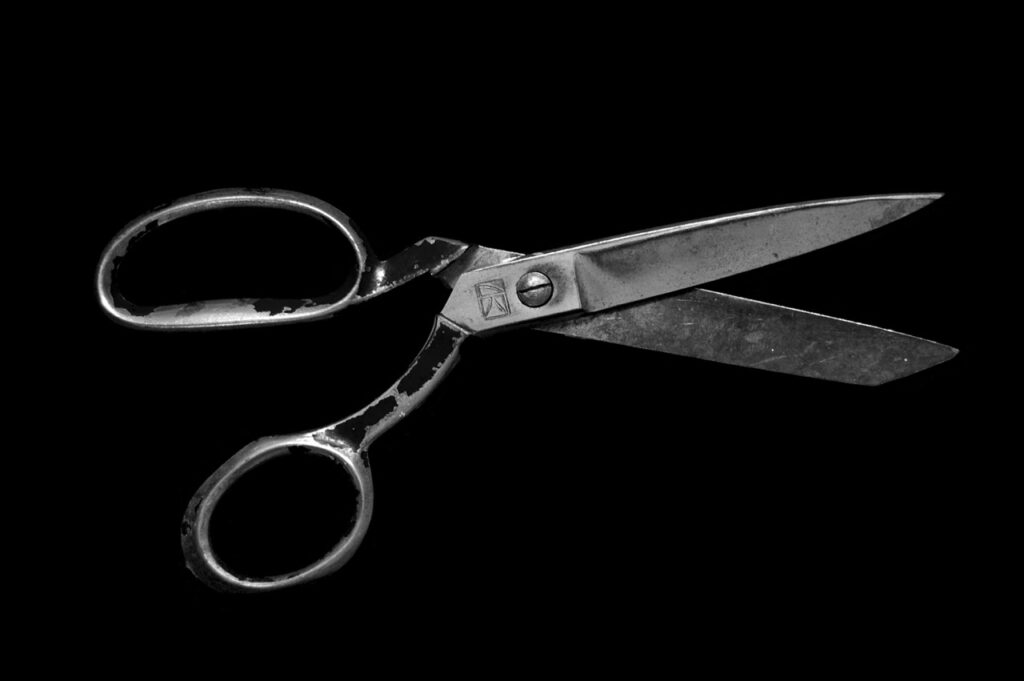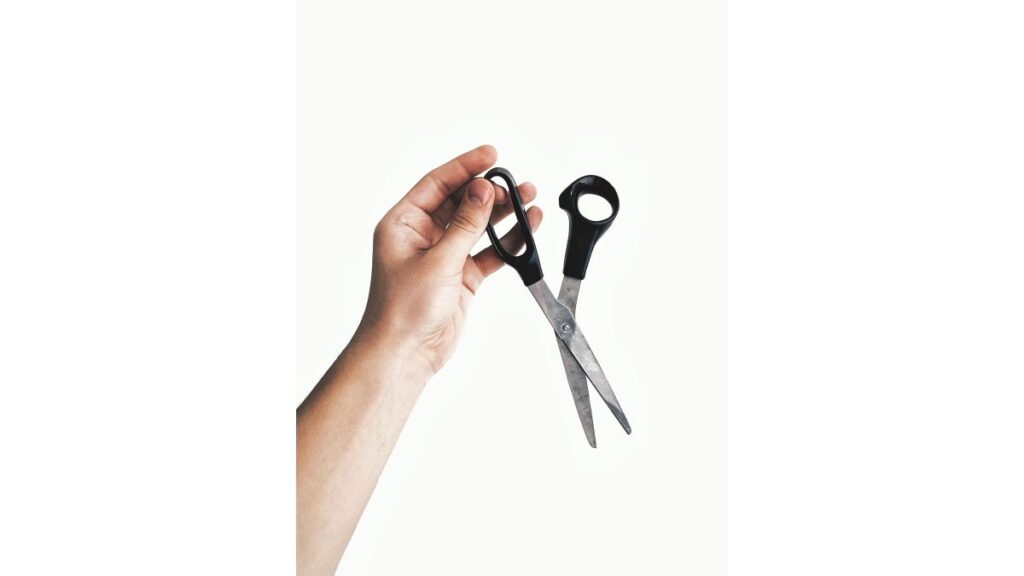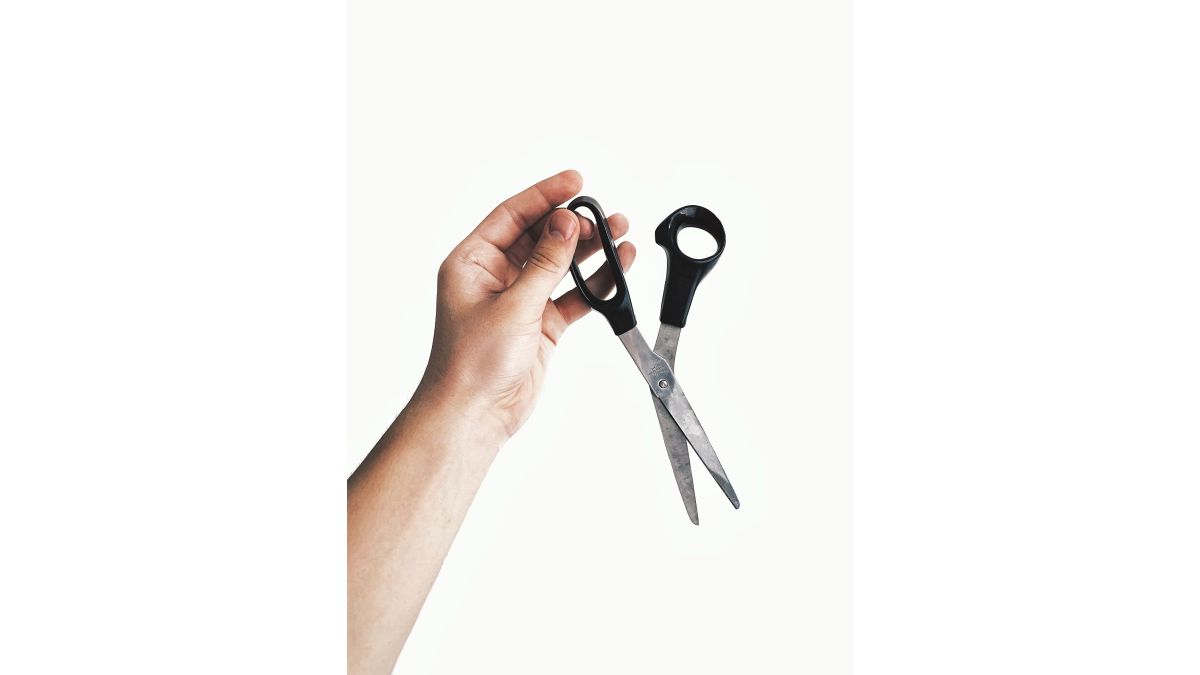When it comes to cutting fabric, it is important to use the right tools for the job. The very sharp angle of fabric shears allows for precise cuts and the longer blades make it easy to cut through multiple layers of fabric at once.
Stainless steel scissors are also a good option for cutting fabric, as they are very durable and can easily handle even thick fabrics. No matter which type of scissors you choose, be sure to keep them sharp to ensure clean cuts and avoid fraying or tearing of the fabric.
How to use Sewing scissors to get the best results ?

When it comes to sewing, having a good pair of scissors is extremely important. Not only do they help you accurately cut fabric, but they can also make the difference between clean, professional-looking stitches and messy, uneven seams. So, how can you get the most out of your sewing scissors ?
First, make sure that you are using them for their intended purpose: cutting fabric. Using them for any other tasks, such as cutting paper or opening packages, will dull the blades and decrease their effectiveness.
Be sure to regularly clean and sharpen your scissors to keep them in top shape. Finally, invest in high quality scissors made specifically for sewing ,they may cost more upfront, but they will last longer and provide better results in the long run.
By following these simple tips, you’ll ensure that your sewing scissors always perform at their best.
The difference between Regular scissors and Sewing scissors


When purchasing scissors, it’s important to know the differences between regular and sewing scissors. Regular scissors are typically smaller and have sharper, pointed tips, making them ideal for cutting paper or crafting projects.
In contrast, Sewing scissors have larger blades and rounded tips, allowing them to easily snip through fabric without accidentally puncturing it. They also tend to have a sharper edge, making clean cuts in heavier materials like denim or leather.
So whether you’re constructing a garment or simply opening a package, it’s always a good idea to use the right type of scissor for the job.
Why you should never use normal scissors to cut fabric
One of the most important tools in any seamstress or tailor’s arsenal is a good pair of sewing scissors. These specialized scissors are designed to cleanly cut through fabric without fraying or damaging the material.
The blade is typically longer and thinner than normal scissors, allowing for precision cuts. In contrast, regular household scissors were not made to cut through fabric and will quickly become dull with repeated use.
The blades may also be too thick, resulting in uneven cuts and frayed edges. So when it comes to cutting fabric, reach for those trusty sewing scissors instead of trying to make do with a pair of normal scissors.
It may seem like it will save you money in the short term, but in the long run it could end up costing you both time and materials. Trust me – invest in good sewing scissors and your projects will thank you for it.
How to keep your sewing scissors in good condition
As any seamstress or tailor knows, a sharp pair of scissors is essential to getting clean, precise cuts in fabric.
However, sewing scissors can quickly become dull or damaged if they are not properly cared for. One way to keep your scissors in top condition is to designate them solely for fabric use and avoid cutting through thick materials like paper or plastic. It is also important to regularly oil the blades to prevent rust and maintain their sharpness.
Storing your sewing scissors safely in a sheath or box will protect them from accidentally hitting against hard surfaces and becoming bent or dented. Taking a little extra time to properly care for your scissors will ensure they stay in good shape and continue giving you crisp cuts for years to come.
Sewing scissors are a specific type of scissors that have been designed specifically for cutting fabric.
They have a curved blade which allows you to cut the fabric without stretching it, and they are also much sharper than regular scissors, meaning that they can easily cut through the fabric without damaging it.
If you are looking to buy a new pair of scissors to use for sewing, then make sure you purchase some good quality sewing scissors – you will be glad you did!
The Many Benefits of Bent-Handled Shears
Bent-handled shears put less strain on your wrist :
If you’ve ever used regular shears for an extended period of time, you know just how much strain they can put on your wrist. And that’s not good for anyone, especially if you want to have a long and successful career in the hair industry.
Bent-handled shears, on the other hand, are designed to be used with a natural grip that puts far less strain on your wrist, meaning you can cut hair for hours without having to worry about pain or fatigue setting in.
They’re also great for cutting tough-to-reach areas : With their unique design, bent-handled shears give you much greater control and dexterity when cutting around difficult-to-reach areas like the nape of the neck or behind the ears.
This is thanks in part to the fact that you don’t have to contort your wrist in unnatural positions to use them—something that can’t be said of regular shears.
Bent-handled shears are simply more comfortable to use : At the end of the day, bent-handled shears are just more comfortable to use than regular shears—plain and simple. If you’re looking for a pair of scissors that will allow you to work comfortably for hours on end, then bent-handled shears are definitely worth considering.
There are numerous advantages to using bent-handled shears, including less strain on your wrist, greater control and dexterity, and increased comfort.
If you’re looking for a high-quality pair of scissors that will help you work more efficiently and comfortably, then bent-handled shears should definitely be at the top of your list.
How to Choose the Right Shears for Sewing
When it comes to sewing, having a good pair of shears is essential. Not all shears are created equal, however, and it’s important to choose a pair that is well-suited for the fabric you’ll be working with.
There are three main types of shears available for sewers: pinking shears, embroidery scissors, and all-purpose scissors.
Pinking shears have zigzag blades that create a zigzag pattern as you cut. These are great for cutting fabric edges because they help prevent fraying. Pinking shears can be used on most types of fabric, but they work best on light to medium-weight fabrics.
Embroidery scissors have small, sharp blades that make them great for cutting small details. They can be used on most types of fabric, but they work best on light to medium-weight fabrics.
All-purpose scissors have large blades that make them great for cutting large pieces of fabric. They can be used on most types of fabric, but they work best on heavy-weight fabrics.
There are a few things you’ll want to keep in mind when choosing shears for sewing. First, think about the type of fabric you’ll be cutting.
If you’re working with delicate fabrics like silk or satin, you’ll want to choose a pair of shears that have sharp, pointed blades to prevent fraying. For heavier fabrics like denim or leather, you’ll want a pair of sturdier shears with blunt blades that can handle the thicker fabric.
Another thing to consider is the size of the blades. Shears come in a variety of blade sizes, from 4″ to 8“. The size you’ll need will depend on the type of project you’re working on.
If you’re just doing some basic alterations or mending, a 4″ blade will probably suffice. For larger projects like cutting patterns or trimming fabric, you’ll want a blade that is at least 6″ long.
Finally, make sure you choose a pair of shears that feel comfortable in your hand. You don’t want to be cutting fabric with a pair of shears that are too small or too large for your hand—it will make the job more difficult and can even lead to hand fatigue. Try out a few different pairs before making your final decision to find the perfect fit.
We hope these tips have helped you better understand how to choose the right shears for your next sewing project. Remember to keep in mind the type of fabric you’ll be working with, the size of the project, and most importantly, how comfortable the shears feel in your hand. With these factors in mind, finding the perfect pair of shears will be a breeze!
FAQ
- What is the best way to cut fabric ?
- What type of scissors should you use to cut fabric
- How do I cut fabric without it fraying?
- What is the difference between bias and binding tape?
- Why is a rotary cutter better than scissors?
- What is the difference between pinking shears and regular scissors?
- What is the difference between bias and binding tape?
- What is the best way to cut fabric without it fraying?
- What are some of the best tips for cutting fabric with scissors?
